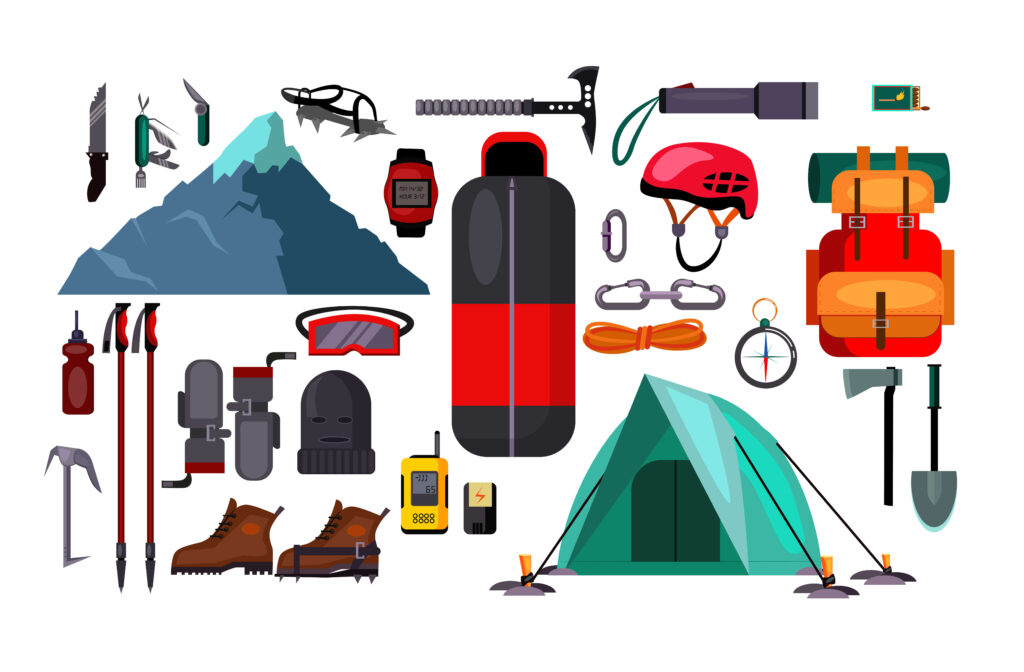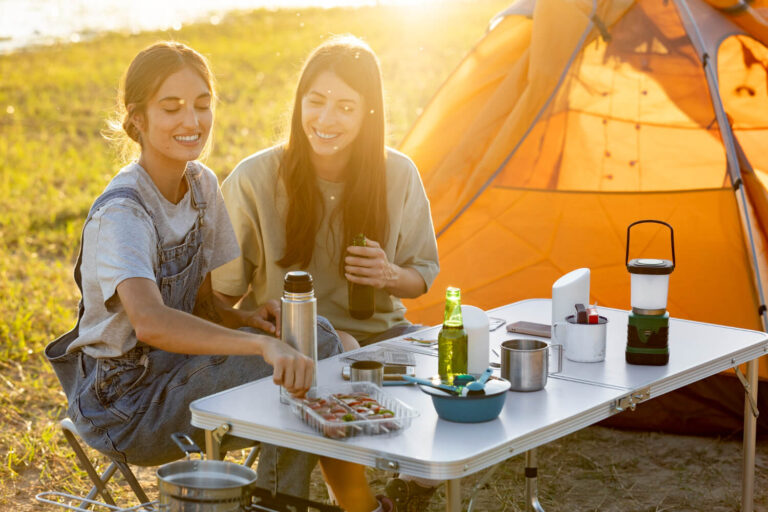
Introduction
Embarking on a multi-day hiking trip is an exhilarating adventure that allows you to immerse yourself in the beauty of nature, challenge your physical and mental limits, and create lasting memories. However, along with the thrill of hiking in the wilderness comes the responsibility of proper preparation, including packing efficiently and effectively for the trip.
Packing plays a crucial role in the success and safety of your hiking expedition, as it ensures you have all the necessary gear, clothing, food, and water to sustain yourself during the trip. In this article, we will delve into the importance of packing for a multi-day hiking trip and provide an overview of the content that will be covered to help you prepare for your adventure with confidence.
The Thrill and Challenges of Multi-Day Hiking Trips:
Multi-day hiking trips offer a unique and rewarding experience that allows you to connect with nature in a profound way. The sense of accomplishment, self-reliance, and the opportunity to explore stunning landscapes can be incredibly fulfilling. However, it’s important to acknowledge that multi-day hiking trips also present challenges, such as unpredictable weather conditions, varying terrains, limited access to facilities, and the need for self-sufficiency. Proper packing is essential to ensure that you are equipped to face these challenges and make the most out of your hiking adventure.
Importance of Proper Packing for a Successful Trip:
Proper packing is a key factor in ensuring a successful multi-day hiking trip. It involves carefully selecting and organizing gear, clothing, food, and water supplies to meet your needs while keeping your backpack weight manageable. Packing efficiently and effectively can help you stay comfortable, safe, and prepared throughout your journey. On the other hand, haphazard packing or carrying unnecessary weight can lead to discomfort, fatigue, and increased risk of injury or accidents. Therefore, taking the time to pack thoughtfully and strategically is crucial for a successful multi-day hiking trip.

Understanding Your Hiking Trip:
Researching the Trail and Understanding its Difficulty Level:
Before embarking on a multi-day hiking trip, it’s essential to thoroughly research the trail you will be hiking on. This includes understanding the difficulty level of the trail, which can vary greatly depending on factors such as elevation gain, terrain, distance, and overall trail conditions. Researching the trail difficulty level will help you gauge the physical and mental demands of the hike, and accordingly, pack the appropriate gear, clothing, and supplies. It will also help you plan your itinerary, estimate the time required to complete the hike, and ensure that you are physically and mentally prepared for the challenge.
Knowing the Expected Weather Conditions and Seasonal Considerations:
Weather conditions can greatly impact your hiking experience, so it’s crucial to research and understand the expected weather conditions for your multi-day hiking trip. This includes checking the average temperatures, precipitation levels, and potential weather fluctuations during the time of your hike. It’s important to pack accordingly, including appropriate clothing layers, rain gear, and extra supplies for extreme weather conditions. Additionally, seasonal considerations such as trail closures, wildlife activity, and insect presence should also be taken into account when packing for your trip.
Determining the Camping Options and Availability of Facilities:
Another critical aspect of understanding your multi-day hiking trip is to determine the camping options and availability of facilities along the trail. Research the campsites or shelters available along the trail and their amenities, including water sources, toilet facilities, and cooking areas. This will help you plan your daily mileage, rest stops, and meal options. If camping is not allowed or facilities are limited, you may need to carry additional gear or supplies, such as a camping stove, water filtration system, or extra food. Understanding the camping options and facilities along the trail will help you pack accordingly and ensure you are self-sufficient during your hike.

Essential Gear Checklist:
A comprehensive gear checklist is a crucial component of packing for a multi-day hiking trip. Here are some essential items that should be included in your gear checklist:
- Backpack: Choose a backpack that is suitable for the duration and difficulty level of your hike. Consider factors such as capacity, weight, comfort, and durability. Look for a backpack with adjustable straps, padded hip belts, and a supportive frame to distribute weight evenly on your back.
- Tent or Shelter: A reliable tent or shelter is essential for camping during your multi-day hike. Consider the size, weight, and weather resistance of the tent or shelter based on the expected weather conditions and camping options along the trail.
- Sleeping Bag and Sleeping Pad: A warm and comfortable sleeping bag and sleeping pad are crucial for a good night’s sleep during your camping nights. Choose a sleeping bag that is suitable for the expected temperature range and a sleeping pad that provides insulation and cushioning for a comfortable rest.
- Clothing: Pack appropriate clothing based on the expected weather conditions and the duration of your hike. Include items such as moisture-wicking and quick-drying base layers, insulation layers, waterproof and windproof outer layers, socks, and a hat. Don’t forget to pack extra clothing for layering, as weather conditions can change quickly in the wilderness.
- Footwear: Invest in a good pair of hiking boots or shoes that provide proper support, traction, and comfort. Make sure to break them in before your trip to prevent blisters and discomfort during your hike. Don’t forget to pack extra socks to keep your feet dry and comfortable.
- Food and Water: Pack enough food and water to sustain yourself throughout your multi-day hiking trip. Consider lightweight and non-perishable food options that provide adequate nutrition and energy. Carry a water filtration system or purification tablets to ensure a safe and sufficient water supply along the trail.
- Safety Equipment: Safety should be a top priority during your multi-day hiking trip. Include essential safety equipment such as a first aid kit, emergency whistle, fire starter, headlamp or flashlight, and a multi-purpose tool. Familiarize yourself with how to use these items and be prepared for emergencies.
- Navigation Tools: Navigation tools are crucial for staying on the right track during your hike. Pack a detailed trail map, a compass, and a GPS device or smartphone with offline maps. Make sure to familiarize yourself with the route and trail markings before your trip.
- Personal Items: Don’t forget to pack personal items such as sunscreen, insect repellent, sunglasses, a hat, toiletries, a towel, and personal medications. Consider the environmental impact and pack out all trash and litter.
- Miscellaneous Gear: Depending on the specific requirements of your multi-day hiking trip, you may need additional gear such as trekking poles, a camp stove, cookware, bear canister or bear bag for food storage, and extra cords or straps for securing your gear.
Factors to Consider When Selecting Gear:
When selecting gear for your multi-day hiking trip, it’s important to consider factors such as durability, weight, and versatility. Look for gear that is durable and can withstand the rigors of the trail. Choose lightweight options to reduce the overall weight of your backpack, as carrying heavy gear can be exhausting and slow you down. Additionally, select gear that is versatile and can serve multiple purposes, which can help you save space and weight in your backpack.
Importance of Safety Equipment, Navigation Tools, and First Aid Supplies:
Safety equipment, navigation tools, and first aid supplies are essential for a safe and successful multi-day hiking trip. Safety equipment, such as a first aid kit, emergency whistle, fire starter, and headlamp or flashlight, can help you handle emergencies and stay safe in unexpected situations. Navigation tools, such as a detailed trail map, compass, and GPS device, are crucial for navigating the trail and staying on the right path. They can prevent you from getting lost and help you find your way back to the trailhead or campsite. First aid supplies, such as bandages, antiseptics, and medications, are important for treating minor injuries and illnesses on the trail.
It’s important to familiarize yourself with how to use this safety equipment, navigation tools, and first aid supplies before your trip. Make sure they are easily accessible in your backpack and know how to use them in case of an emergency. Regularly check and replenish your supplies throughout your hike, especially for longer trips.
Remember, proper packing of essential gear, safety equipment, navigation tools, and first aid supplies can significantly contribute to the success and safety of your multi-day hiking trip. Take the time to carefully select and pack these items to ensure a smooth and enjoyable hiking experience.

Efficient Packing Techniques
Efficient packing is crucial for a multi-day hiking trip, as it can greatly impact your comfort and ease of movement on the trail. Here are some details on efficient packing techniques:
Choosing the right backpack size and type for your needs:
The first step in efficient packing is selecting the right backpack size and type that suits your trip’s requirements. Consider the duration of your hike, the amount of gear you need to carry, and your body size and shape. A backpack with a capacity of 40-60 liters is typically suitable for multi-day hiking trips. Look for a backpack with a supportive hip belt and adjustable shoulder straps for a comfortable fit.
Packing strategies for organizing gear based on accessibility and weight distribution:
When it comes to packing your gear, it’s important to have a strategy in mind to keep everything organized and easily accessible. Start by packing heavy items close to your back and near the center of the backpack to maintain balance and stability. Items like your tent, camping stove, and cooking fuel should be packed low and close to your back. Medium-weight items like clothes and food can go in the middle, and lighter items like a sleeping bag and pad can be packed towards the top. Use compartments, pockets, and compression straps on your backpack to keep gear in place and prevent shifting during the hike.
Tips for maximizing space and reducing pack weight through smart packing:
Efficient packing also involves maximizing space and reducing pack weight through smart packing techniques. Here are some tips:
- Use compression sacks or packing cubes to compress your clothes and save space.
- Pack multi-purpose items that can serve multiple functions, such as a bandana that can be used as a towel, a headband, or a face mask.
- Avoid redundant items and pack only what you really need for the trip.
- Choose lightweight gear and opt for smaller travel-sized containers for toiletries and other liquids.
- Distribute weight evenly and avoid overloading one side of your backpack to maintain balance and stability.
By implementing these efficient packing techniques, you can ensure that your gear is well-organized, and easily accessible, and your backpack is balanced for a comfortable and enjoyable multi-day hiking trip.

Tips for Reducing Pack Weight
Tips for reducing pack weight are essential for multi-day hiking trips, as a lighter backpack can significantly improve your comfort and mobility on the trail. Here are some details on how to reduce pack weight:
Evaluating gear and supplies to minimize weight without compromising safety:
Start by evaluating each piece of gear and supplies you plan to bring on your multi-day hiking trip. Consider the weight of each item and its necessity for the trip. Look for lighter alternatives that still meet your safety and comfort requirements. For example, you may opt for a lightweight camping stove, a smaller and lighter tent, or a compact and lightweight sleeping bag that still provides adequate insulation.
Strategies for cutting down on non-essential items:
One of the effective ways to reduce pack weight is by cutting down on non-essential items. Consider leaving behind items that are not crucial for your trip, such as extra clothing, unnecessary gadgets, or luxury items. Think critically about each item’s importance and functionality on the trail, and only pack what is absolutely necessary to keep your backpack as light as possible.
Lightening the load with lightweight gear options and multi-purpose items:
Investing in lightweight gear options can significantly reduce pack weight. Look for gear made from lightweight materials, such as titanium, carbon fiber, or high-quality lightweight fabrics. For example, a lightweight backpack, sleeping pad, and cooking set can shave off considerable weight from your pack. Additionally, consider packing multi-purpose items that can serve multiple functions, such as a trekking pole that can also be used as a tent pole, or a bandana that can double as a towel or a headband.
It’s important to note that reducing pack weight should not compromise your safety or comfort on the trail. Always prioritize essential items such as safety equipment, navigation tools, and first aid supplies, and make sure you have enough food, water, and clothing to stay safe and comfortable throughout your trip. Carefully evaluate each item you plan to pack and look for opportunities to lighten the load without compromising your safety and well-being on the trail.

Additional Considerations
When preparing for a multi-day hiking trip, there are additional considerations beyond gear and packing techniques. Here are some details on these additional considerations:
Leave No Trace principles for minimizing environmental impact:
As responsible outdoor enthusiasts, it’s important to follow Leave No Trace principles to minimize our impact on the environment. This includes packing out all trash and litter, using established trails, campsites, and fire rings, and respecting wildlife and vegetation. Familiarize yourself with the Leave No Trace principles and make sure to apply them throughout your trip to help protect the natural environment for future generations of hikers.
Dealing with unexpected weather changes and emergencies:
Weather conditions can change quickly in outdoors, and it’s crucial to be prepared. Research the expected weather conditions for your hiking trip and pack accordingly, including rain gear, extra layers, and appropriate shelter. Additionally, be prepared for emergencies by packing a first aid kit, emergency whistle, fire starter, and a backup communication device, such as a satellite phone or a personal locator beacon (PLB).
Adjusting and reorganizing gear during the trip:
As you progress on your multi-day hiking trip, you may need to adjust and reorganize your gear to ensure optimal comfort and efficiency on the trail. This may include rearranging gear in your backpack for better weight distribution, repacking food supplies, and adjusting clothing layers based on changing weather conditions. Regularly assess your gear and make necessary adjustments to ensure you’re carrying only what you need and that your backpack remains well-balanced and comfortable throughout the trip.
Packing considerations for specific types of terrain or climates:
Different terrains and climates may require specific packing considerations. For example, if you’re hiking in a desert, you may need to pack extra water and sun protection gear. If you’re hiking in snowy or icy conditions, you may need to pack specialized gear such as ice axes, crampons, or snowshoes. Research the specific terrain and climate of your hiking destination and pack accordingly to ensure your safety and comfort in those conditions.
By considering these additional factors beyond gear and packing techniques, you can better prepare for a multi-day hiking trip and ensure a successful and enjoyable adventure in the great outdoors. Always prioritize safety, comfort, and environmental stewardship, and be prepared to adapt and adjust your gear and packing as needed during the trip.
Conclusion
In conclusion, proper packing is essential for a successful multi-day hiking trip. By understanding your hiking trip, packing the right gear, utilizing efficient packing techniques, and considering additional factors, you can set yourself up for a safe and enjoyable adventure in the great outdoors. So, make sure to do your research, plan ahead, and pack smartly for your upcoming multi-day hiking trip. Happy hiking!
Read more articles here.





